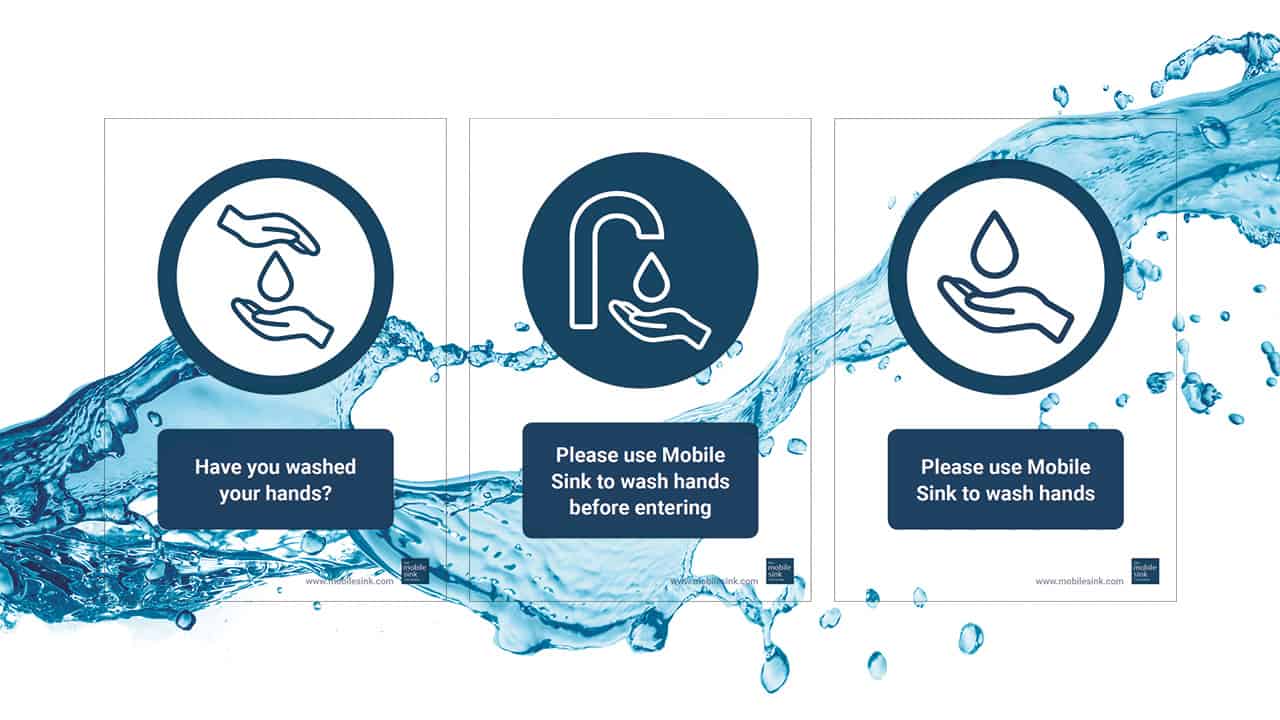
Hand hygiene is the most effective way to prevent the transmission of pathogens by reducing the number of microorganisms that may be present.
The spread of infection from hands is recognised and the importance of compliance with hand hygiene techniques is emphasised in all national and international guidelines.
Hand washing facilities
When deciding on hand washing facilities you should ensure that there are adequate and conveniently placed hand wash facilities in all treatment areas. If this is not possible to hard plumb hand washing facilities, then portable hand wash basins are ideal. The hand washing instructions should be clearly displayed at the hand wash basin, such as in the form of a poster as the instructions should be accessible to all.
Hand wash basins must be designated for that purpose only and have a constant supply of hot and cold running water, which is to be delivered ideally through a mixer tap. Equipment should never be washed in the hand wash basins as this will cause cross-contamination.
In order to ensure hands are cleaned to the highest standard all liquid soap dispensers with single use liquid soap cartridges/bottles should be used. All liquid soap dispensers should ideally wall-mounted, although free standing dispensers would be considered acceptable if wall-mounting is not an option. The main reason disposable liquid soap cartridges are recommended is because they do not permit a “topping-up” process which will minimise the risk of contamination.
The wall-mounted disposable paper towels should be next to the hand wash basins, and these must be fully stocked at the start of each working day as this will minimise or reduce the need to fill up within hours during which the premises are operational. It is also advisable to have a foot-operated pedal bin, of an appropriate size, which should be placed next to the hand wash basin for the disposal of paper towels.
As a gold standard for infection control purposes, NHS Estates recommend that hand wash basins should have contactless cleaning solutions such as elbow operated tap, foot switch or infra-red operation.
When to wash hands
- Before and after an intervention with each client
- After contact with any blood or body fluids
- Immediately after the removal of gloves
- After using a tissue or handkerchief
- After smoking
- After visiting the toilet
- Before and after eating
- Immediately after any other activity or contact with a client’s surroundings that could potentially result in hands becoming contaminated.
What to use for hand washing?
For an ordinary hygienic hand wash, the use of liquid soap is sufficient. Any preparations containing antiseptics that leave a residue on the skins surface are not suitable for use in tattoo and body piercing settings.
How to carry out hand washing
There are three essential stages to hand washing (National Institute for Health and Care Excellence, 2012).
Preparation
Before washing your hands, all wrist and hand jewellery needs to be removed, any cuts must be covered with a waterproof dressing. Fingernails should be kept short and should be free from nail polish.
Start by placing your hands under tepid running water before the applicable of the liquid soap.
Washing and rinsing
The liquid soap and water must come into contact with all surfaces of the hand. The hands must be rubbed to together for a minimum of 10 – 15 seconds, and you should pay particular attention to in between your fingers, nails, thumbs and the tips of the fingers.
Drying
You should use good quality disposable soft paper towels as these reduce cross-contamination. Communal towels are a breeding ground for bacteria.
Here at the Mobile Sink Company, our team are on-hand to answer any questions for tattoo artists or body piercers looking for a portable sink for their studios. Just give us a call on 01183 805302

